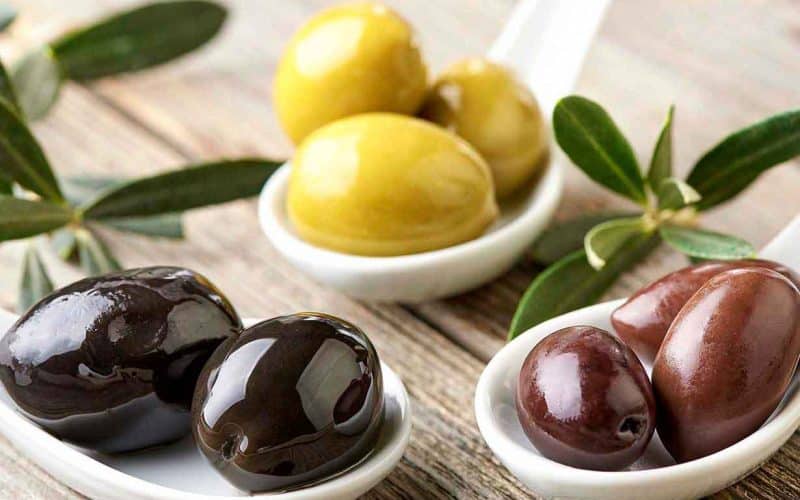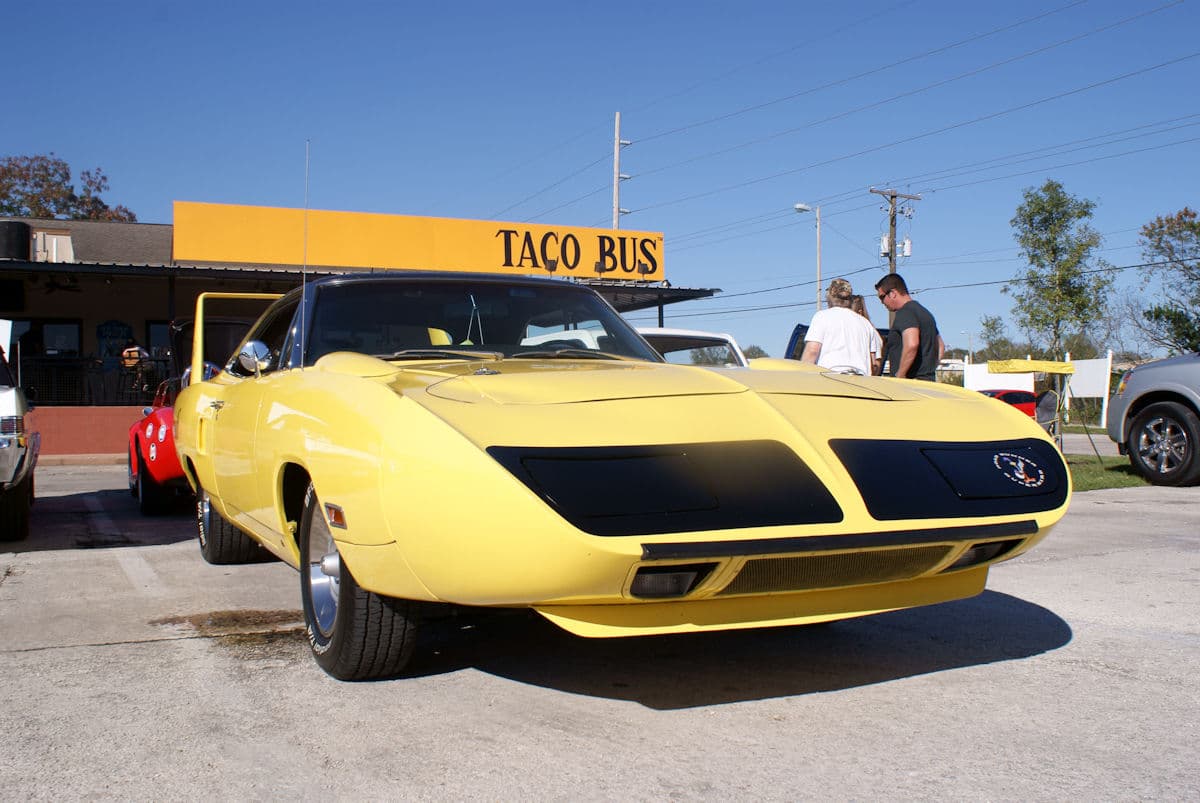Olives are tiny but rich and filled with goodness. Even if you don’t care for olives, you must acknowledge that they are one of the most multipurpose stone fruits available.
There are different types of Olives that all come in various flavors, ranging from sweet and salty to sour and bitter, and are suited for a variety of culinary uses.
Tapenades may be made from them, and they can be used in sauces, stews, stuffings, salads, and consumed fresh or in martinis.
However, a lot of us are only familiar with two varieties of olives: “green” and “black.” If you are one of such persons and you would love to learn about the different types of olives, read this article till the end.
Because there are so many different olive tree cultivars, it’s hard to include them all in one piece.
However, in this post, we’ll look at some of the world’s most popular olives. Let us begin!
1. Kalamata
Kalamata olives are one of the most widely available types. For one thing, you may find them on pizza and in other Italian recipes, and they’re fantastic on cheese boards and snack platters.
Kalamatas are usually the king of Greek table olives, with rich purple color, tight, sharp, glossy skin, and a lovely almond shape.
Tapenades are a fantastic way to use this type, but they are also pleasant plain with roasted cauliflower. However, they’re often kept in red wine vinegar, red wine, and olive oil for a vibrant, smokey, fruity taste.
2. Niçoise
Another typical olive type that you may buy in jars or at your favorite high-end olive bar is Niçoise.
Demure Niçoise olives, grown on a species of olive tree known as “Le Cailletier,” are a vital element in classic French Riviera recipes like salade Niçoise and tapenade.
Their characteristic bitter, salty flavor works great on pizzas, in tapenades, as a sauce additive, and even as a snack on its own.
They’re also delicious nibbled on their own. The Niçoise has an enticingly herbaceous smell with slight licorice overtones that is powerful but not overbearing.
3. Castelvetrano
Castelvetrano olives are the most common snack olive in Italy. They are from Castelvetrano, Sicily, and are called dolce (sweet) because of their bright green color.
These types of olives have a milder flavor than some of the saltier kinds, and they appear very creamy in the brine while remaining harder than other sorts.
Also, they are made from the olive variety novella del belice, and they’re Kermit-green in color, with meaty, buttery flesh.
4. Cerignola
Cerignola is named after the town of Cerignola in the Italian province of Apulia. These massive green olives are produced in Cerignola, near the heel of the boot, in the Puglia region of Italy.
This olive has large-sized plumps usually served green, although it can also be cured black or red (green is firmer than black or red).
It has a moderate flavor and a crispy buttery texture, and they’re perfectly crunchy and buttery. Garlic, cheese, capers, and anchovies work very well with them because of their enormous size.
5. Nyon
These tiny, jet-black olives from the south of France have a heart-stopping flavor. After being dry-cured and then marinated in brine, the vast, wrinkled olives are meaty, just a tad bitter, and full of fragrant flavor.
They’re incredibly delicious because they’re made using Provençal olive oil and aromatic herbs like rosemary and thyme.
6. Liguria
This small olive species, also known as Taggiasca olives, packs a powerful flavor punch despite its diminutive size.
They’re grown in Liguria, Italy’s northwest corner, just a few kilometers from France’s Niçoise olive valley, and the olives are very similar.
Among different types of olives, Liguria is distinguished by its purple color, firm texture, and sweet, nutty flavor.
An aromatic blend of bay leaves, rosemary, and thyme is commonly used to heal them.
7. Gordon
Gordal is a Spanish word that translates to “the fat one.” As the name implies, these are some enormous, fat olives with plenty of powerful, meaty richness to match their frightening girth.
Gordal olives come in green or black varieties, and the former is harvested in September, whereas the latter is left on the trees until October.
Hardy Gordal trees thrive in the arid environment of Andalusia, where these famous tapas olives are grown. With a glass of Sherry and some Jamon, this dish is complete.
8. Alfonso
While Alfonso olives have long been linked with Chile, Peru has administered the province of Tacna, located in the foothills of the La Yarada mountains, since 1929.
These are massive, deep purple olives that have been brine-cured and macerated in red wine. It’s brine-cured and then marinated in red wine to bring suppleness and tanginess.
They have a sour taste and are velvety, delicious, and meaty. It’s a full-bodied red wine that pairs well with charcuterie.
9. Mission
The United States’ olive offspring. Although it was assumed to have originated in Spain, scientists at the University of Spain in Cordoba could not match it to any of the country’s 700 different types of olive.
Mission olive trees have flourished in California since the 1700s; most of the harvest is used to make olive oil, while black oil-cured and green brine-cured table olives have a light, grassy, and dazzling flavor.
10. Manzanilla
Manzanilla olives are the most well-known olive kind, and they might be the first you’ve ever tried.
They are the ones that are commonly laden with little red pimentos and can be found in most stores. This Spanish brine-cured olive has a crisp texture and a slightly smokey, almond-like flavor.
They’re typically stuffed with pimientos or cracked and tossed in garlic and olive oil. A delicious hors d’oeuvre, especially with a glass of chilled Fino Sherry and some crusty bread.
11. Beldi
Although hundreds of different types of olives are grown in Morocco, only a few are exported. Beldi is a rare species of olive, so consider yourself lucky if you can get your hands on these. They’ve been dry-cured, and they’re delicious.
Serve them with excellent olive oil and hot peppers in salads or tagines as the Moroccans do.









